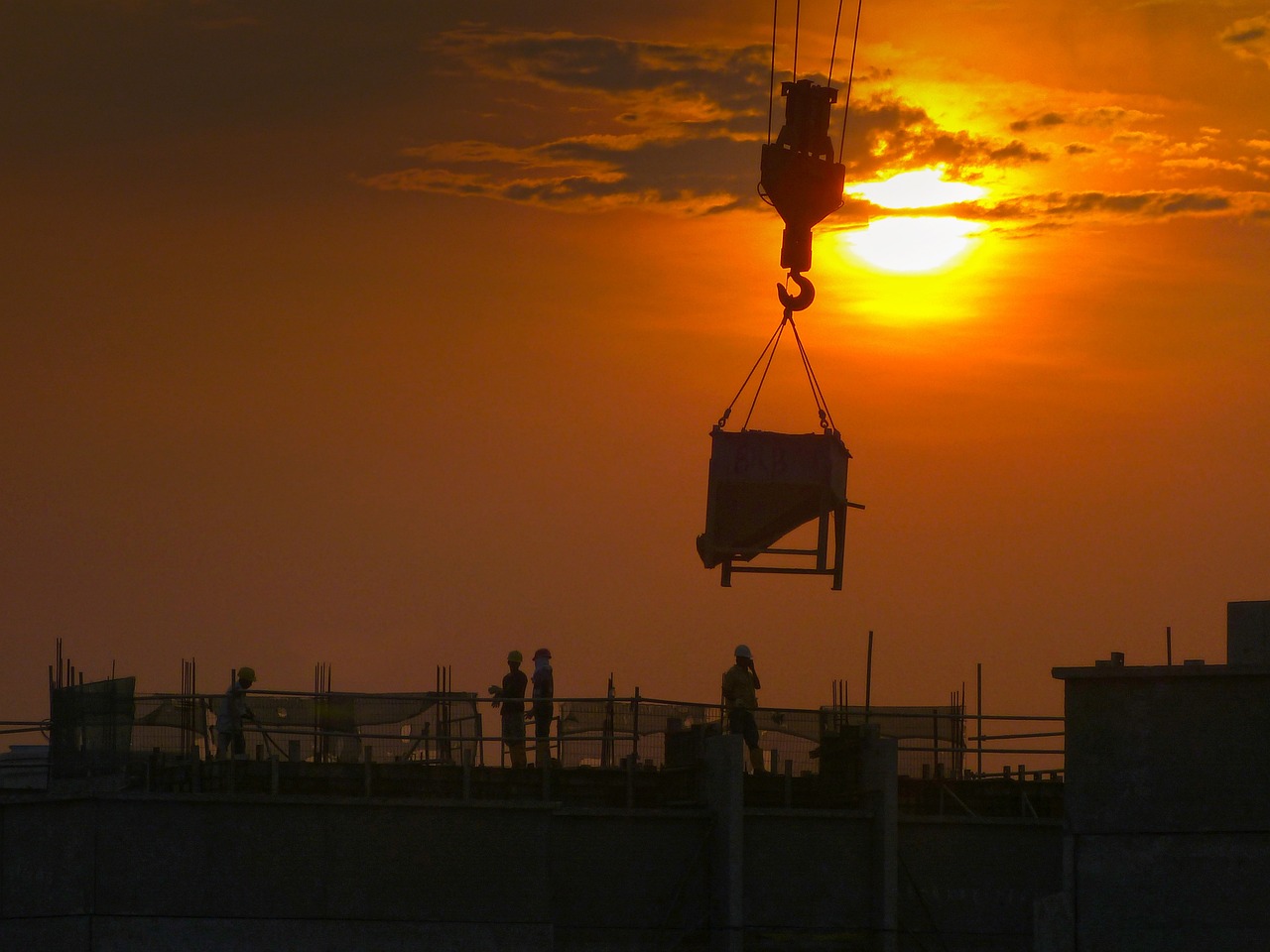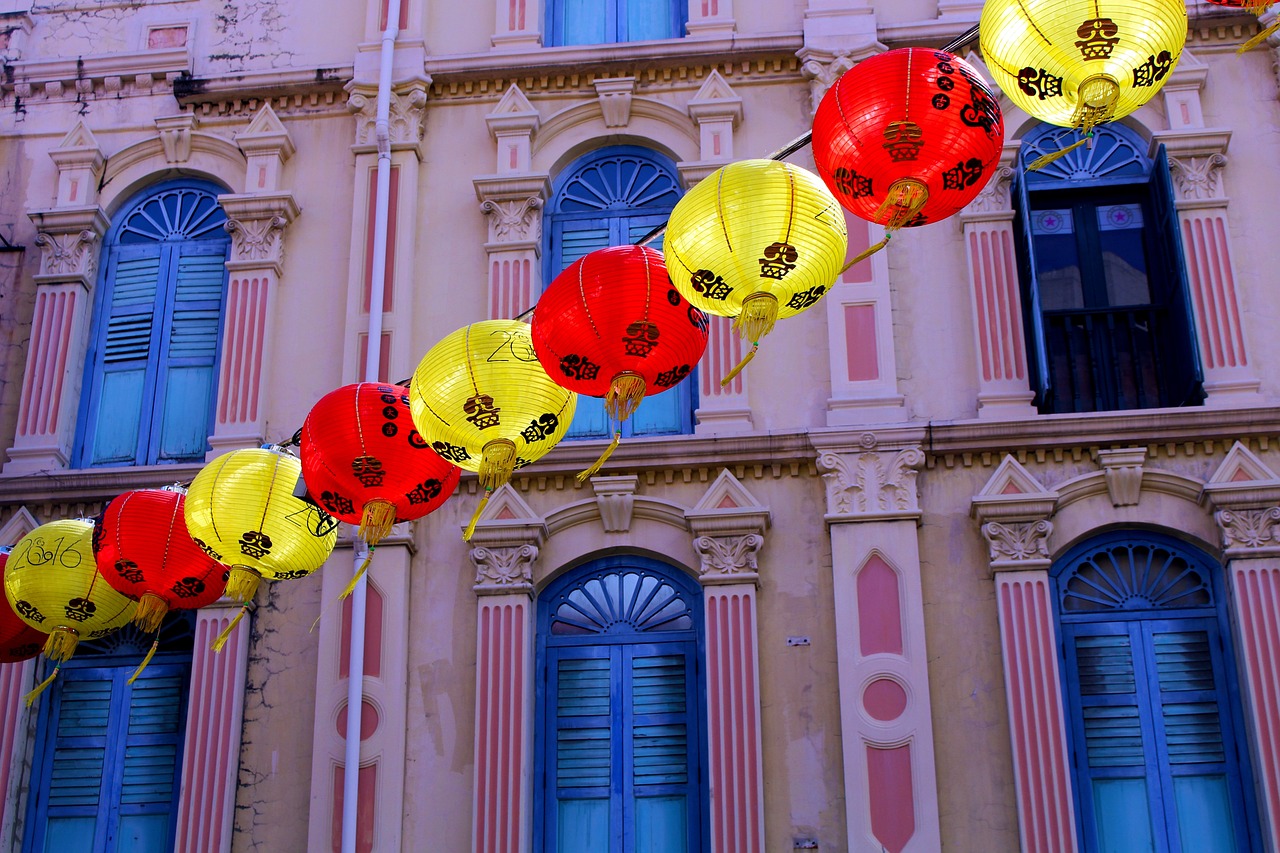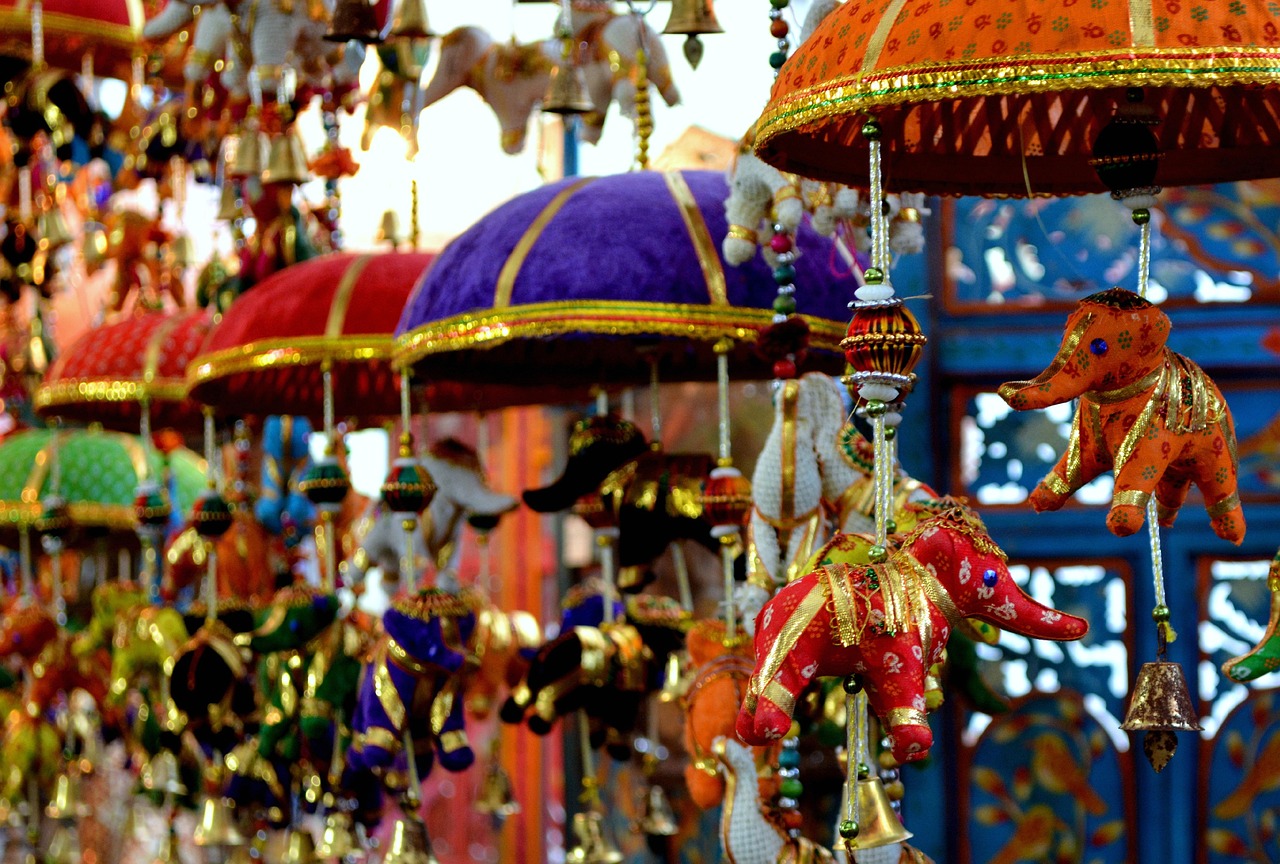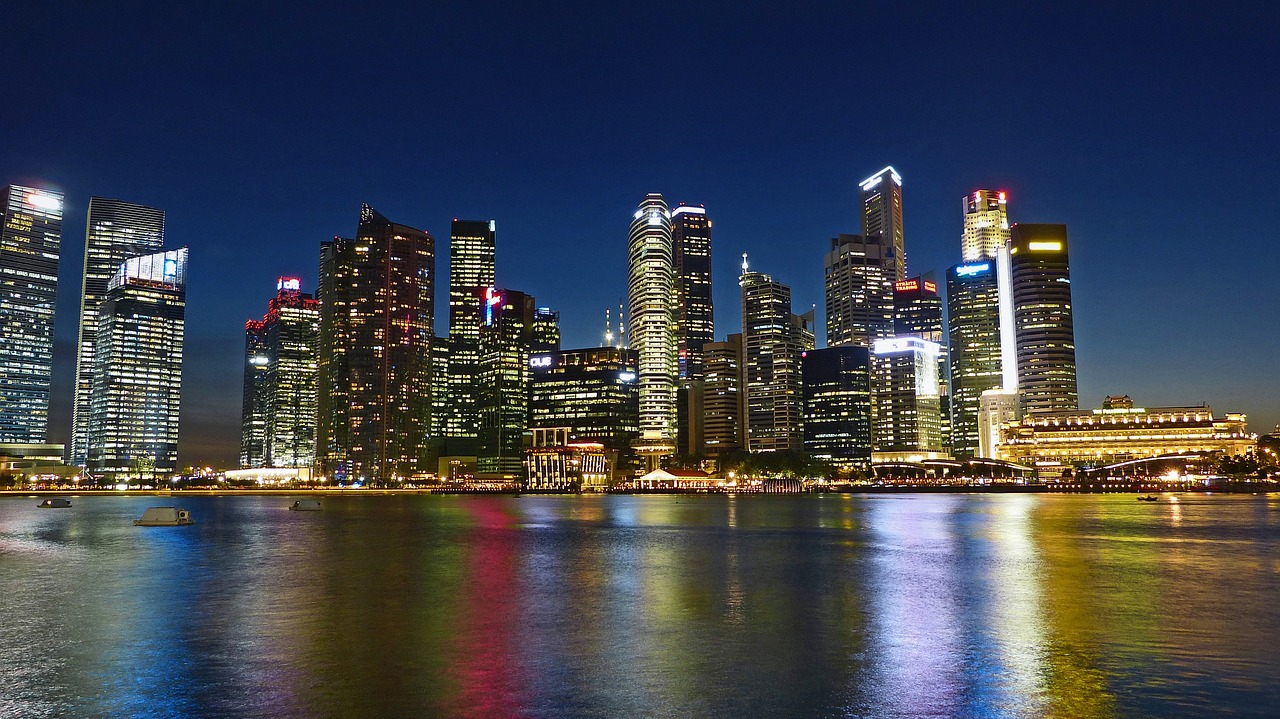Celebrating Global Festivals with Locals in Singapore
Singapore, known for its vibrant multicultural society, offers a unique opportunity to celebrate global festivals with locals. With a diverse range of communities and cultures coexisting harmoniously, the city-state hosts a plethora of festivities throughout the year. This article will explore some of the most exciting global festivals celebrated in Singapore and provide insights on how tourists can immerse themselves in these celebrations alongside the locals.
Festival 1: Chinese New Year
Chinese New Year is one of the most significant festivals celebrated in Singapore. It marks the beginning of the lunar calendar and is characterized by vibrant parades, dragon dances, and traditional performances. Joining the locals in their festive rituals is a wonderful way to experience the rich Chinese culture. Some key highlights of the festival include:
- Reunion Dinners: Families come together for lavish feasts to celebrate the start of the new year.
- Chinatown Festivities: Singapore’s Chinatown is decked out in beautiful decorations, and the streets come alive with performances and street vendors.
- Light-Up Ceremony: The official light-up ceremony marks the beginning of the celebrations, with colorful lanterns illuminating the streets.
The reunion dinner is a time for families to gather and enjoy a sumptuous meal, often featuring traditional dishes such as dumplings and steamed fish.
Visiting Chinatown during Chinese New Year offers a unique cultural experience, with vibrant street decorations, traditional performances, and delicious street food.
Attending the light-up ceremony is a must to witness the transformation of Chinatown into a dazzling display of lights and colors.
Festival 2: Hari Raya Puasa
Hari Raya Puasa, also known as Eid al-Fitr, is a significant festival for the Muslim community in Singapore. It marks the end of Ramadan, the Islamic holy month of fasting. Celebrating Hari Raya Puasa with the locals offers a glimpse into the Malay culture and traditions. Here are some key aspects of the festival:
- Open Houses: Many Malay families open their homes to friends, neighbors, and even strangers to share festive meals and extend warm hospitality.
- Geylang Serai Bazaar: The bustling Geylang Serai Bazaar is a vibrant marketplace where locals gather to shop for festive goods and enjoy street food.
- Prayer Gatherings: Joining the locals for mass prayers at the neighborhood mosques is a humbling experience.
Attending an open house is a fantastic way to experience the Malay culture, indulge in traditional delicacies, and engage in friendly conversations.
Exploring the Geylang Serai Bazaar allows visitors to immerse themselves in the festive atmosphere, try traditional Malay snacks, and shop for unique handicrafts.
Visiting a mosque during Hari Raya Puasa and witnessing the unity and devotion of the Muslim community is a beautiful way to understand their religious practices.
Festival 3: Deepavali
Deepavali, also known as Diwali, is the Hindu festival of lights celebrated in Singapore. It symbolizes the victory of light over darkness and good over evil. Engaging in Deepavali celebrations with the locals provides a glimpse into the vibrant Indian culture. Here are some key highlights:
- Little India: The streets of Little India are adorned with colorful decorations, and the atmosphere is filled with the scent of incense and traditional Indian music.
- Lighting of Oil Lamps: Witnessing the lighting of oil lamps, known as diyas, is a significant ritual during Deepavali.
- Feasting and Sweet Treats: Deepavali is a time for families to gather and indulge in a variety of traditional Indian sweets and delicacies.
Exploring the vibrant streets of Little India during Deepavali offers a sensory feast, with shops selling traditional garments, intricate decorations, and mouthwatering Indian cuisine.
Attending a diya lighting ceremony allows visitors to understand the spiritual significance of Deepavali and appreciate the beauty of illuminated homes and temples.
Sampling the delectable sweets, such as gulab jamun and jalebi, is a must during Deepavali, and joining a local family for a festive meal provides an authentic experience.
Singapore Image 1:

Festival 4: Christmas
Although Christmas is celebrated worldwide, experiencing the festive season in Singapore offers a unique multicultural twist. The city comes alive with dazzling light displays, themed decorations, and joyful celebrations. Joining the locals in their Christmas festivities creates a heartwarming experience. Here are some key aspects:
- Orchard Road: Singapore’s famous shopping belt, Orchard Road, transforms into a winter wonderland with stunning light displays and elaborate decorations.
- Christmas Markets: Various Christmas markets pop up across the city, offering a wide range of festive goodies and unique gifts.
- Church Services: Attending a Christmas service at one of Singapore’s beautiful churches is a serene way to celebrate the religious significance of the festival.
Taking a stroll along Orchard Road during Christmas is a visual treat, with each shopping mall showcasing its own unique theme and mesmerizing decorations.
Exploring the Christmas markets allows visitors to shop for handmade crafts, sample delicious treats, and soak in the festive atmosphere.
Visiting a church during Christmas provides an opportunity to join in the prayers, listen to joyful carols, and experience the sense of community.
Festival 5: Vesak Day
Vesak Day, also known as Buddha Purnima, is an important Buddhist festival celebrated in Singapore. It commemorates the birth, enlightenment, and death of Gautama Buddha. Participating in Vesak Day celebrations with the locals offers a profound spiritual experience. Here are some key elements:
- Procession of Monks: Witnessing the grand procession of saffron-robed monks carrying sacred relics is a highlight of Vesak Day.
- Offering of Alms: Locals often gather at temples to offer food, flowers, and other essentials to the monks as acts of merit-making.
- Temple Visits: Exploring Buddhist temples during Vesak Day allows visitors to observe intricate decorations and join in meditation sessions.
Observing the procession allows visitors to witness the devotion and reverence of the Buddhist community and gain insight into their religious practices.
Participating in the offering of alms provides a hands-on experience of Buddhist customs and a sense of community engagement.
Visiting temples such as the Kong Meng San Phor Kark See Monastery offers a serene environment for reflection and understanding of Buddhist teachings.
Singapore Image 2:

Festival 6: Thaipusam
Thaipusam is a vibrant Hindu festival celebrated by the Tamil community in Singapore. It commemorates the victory of Lord Murugan over evil forces. Participating in Thaipusam alongside the locals provides a profound cultural experience. Here are some key highlights:
- Devotees’ Procession: Witnessing the devotees’ procession, often carrying kavadis (elaborate structures adorned with spikes and flowers), is a mesmerizing sight.
- Piercings and Body Mortification: Some devotees engage in acts of self-mortification, such as body piercings, as expressions of gratitude and penance.
- Sri Thendayuthapani Temple: The Sri Thendayuthapani Temple is the focal point of Thaipusam celebrations in Singapore.
Observing the devotees’ dedication and endurance during the procession offers a deep understanding of their faith and devotion.
Witnessing these acts of devotion provides a unique insight into the cultural and religious significance of Thaipusam.
Visiting the temple during Thaipusam allows visitors to witness traditional rituals, intricate decorations, and the vibrant atmosphere of the festival.
Festival 7: Pesta Raya
Pesta Raya, also known as the Malay Festival of Arts, is an annual celebration of Malay arts and culture in Singapore. It showcases a diverse range of performances, exhibitions, and workshops. Engaging in Pesta Raya festivities provides an enriching cultural experience. Here are some key aspects:
- The Esplanade: Pesta Raya takes place at The Esplanade, Singapore’s iconic performing arts center.
- Exhibitions and Workshops: Pesta Raya features various exhibitions and workshops that offer insights into Malay art forms.
- Bazaar and Food: The Pesta Raya bazaar offers a wide array of traditional Malay crafts, fashion, and delectable street food.
Attending performances at The Esplanade allows visitors to experience traditional Malay music, dance, and theater in a world-class venue.
Participating in workshops, such as batik painting or traditional dance classes, allows visitors to learn and appreciate the intricacies of Malay arts.
Exploring the bazaar provides an opportunity to shop for unique Malay handicrafts and savor traditional Malay delicacies.
Singapore Image 3:

Festival 8: Mid-Autumn Festival
The Mid-Autumn Festival, also known as the Mooncake Festival, is a traditional Chinese festival celebrated in Singapore. It is a time for family reunions and the appreciation of the full moon. Joining the locals in their Mid-Autumn Festival celebrations provides a glimpse into Chinese customs and traditions. Here are some key highlights:
- Mooncake Tasting: Sampling a variety of mooncakes, a traditional Chinese pastry, is an integral part of the Mid-Autumn Festival.
- Lantern Procession: The streets come alive with vibrant lantern processions, where locals carry colorful lanterns of various shapes and sizes.
- Gardens by the Bay: The Gardens by the Bay hosts a series of events and displays, including a magnificent lantern display.
Attending a mooncake tasting event allows visitors to savor different flavors and learn about the significance of mooncakes during the festival.
Participating in a lantern procession offers a lively and enchanting experience, with lanterns lighting up the night sky.
Visiting Gardens by the Bay during the Mid-Autumn Festival allows visitors to admire the beautiful lantern installations and enjoy cultural performances.
Festival 9: Songkran
Songkran, the Thai New Year festival, is celebrated by the Thai community in Singapore. It is known for its water fights and vibrant street festivities. Participating in Songkran celebrations with the locals provides a taste of Thai culture and a refreshing escape from the tropical heat. Here are some key elements:
- Water Festivities: Songkran is famous for its water fights, with locals and tourists joyfully splashing water on each other.
- Thai Cultural Performances: Various cultural performances, such as traditional dances and music, showcase the richness of Thai culture.
- Thai Food Stalls: Indulging in authentic Thai cuisine from the street food stalls is a must during Songkran.
Joining in the water festivities allows visitors to experience the fun and festive spirit of Songkran.
Attending these performances offers a glimpse into Thai traditions and artistic expressions.
Sampling dishes like pad thai, green curry, and mango sticky rice provides a delightful culinary experience.
Singapore Image 1:

Festival 10: National Day
Singapore’s National Day is celebrated on August 9th to commemorate the nation’s independence. It is a grand celebration of Singaporean identity and achievements. Joining the locals in their National Day festivities allows visitors to witness the patriotic spirit of Singapore. Here are some key highlights:
- National Day Parade: The National Day Parade is a spectacular display of military parades, aerial shows, and fireworks.
- Fireworks and Light Shows: Fireworks and light shows illuminate the night sky, creating a mesmerizing visual spectacle.
- Community Celebrations: Various community events, including carnivals and concerts, take place across the island.
Attending the parade offers a firsthand experience of Singapore’s pride and unity as the nation celebrates its achievements.
Watching the fireworks and light shows at iconic locations such as Marina Bay Sands or Gardens by the Bay is a memorable experience.
Participating in community celebrations allows visitors to interact with locals, enjoy live performances, and indulge in local delicacies.
Festival 11: Chingay Parade
The Chingay Parade is an annual street parade in Singapore that celebrates the Lunar New Year. It is a multicultural extravaganza showcasing vibrant floats, cultural performances, and dazzling costumes. Participating in the Chingay Parade alongside the locals offers a unique spectacle of Singapore’s cultural diversity. Here are some key aspects:
- Street Performances: The Chingay Parade features a multitude of street performances, including acrobatics, dance, and martial arts.
- Floats and Displays: Elaborate floats adorned with colorful decorations depict various cultural and festive themes.
- Community Involvement: The Chingay Parade actively involves community groups, allowing them to showcase their unique traditions and customs.
Witnessing these performances up close allows visitors to appreciate the talent and energy of the performers.
Marveling at the intricately designed floats and displays offers a visual feast and showcases the creative spirit of Singapore.
Interacting with community participants during the parade provides a deeper understanding of Singapore’s diverse cultural heritage.
Singapore Image 2:

Festival 12: Singapore Food Festival
The Singapore Food Festival is a gastronomic extravaganza celebrating Singapore’s diverse culinary heritage. It showcases a wide array of local dishes, culinary workshops, and food-related events. Participating in the Singapore Food Festival allows visitors to indulge in the city-state’s culinary delights. Here are some key highlights:
- Hawker Centers: Hawker centers are the heart of Singapore’s food culture, offering a variety of affordable local dishes.
- Food Trails: The Singapore Food Festival organizes food trails that take participants on a culinary journey across different neighborhoods.
- Culinary Workshops: The festival offers hands-on culinary workshops where participants can learn to cook traditional Singaporean dishes.
Exploring hawker centers such as Maxwell Food Centre or Lau Pa Sat during the food festival provides a chance to savor signature Singaporean dishes.
Joining a food trail allows visitors to discover hidden food gems, learn about local ingredients, and interact with passionate food vendors.
Participating in a culinary workshop provides a unique opportunity to learn from local chefs and gain insights into Singaporean cooking techniques.
Conclusion
Celebrating global festivals with locals in Singapore offers a remarkable opportunity to immerse oneself in the city-state’s multicultural tapestry. From Chinese New Year to the Singapore Food Festival, each festival provides a unique cultural experience. By joining in the festivities, visitors can gain a deeper understanding of the local traditions, customs, and way of life. Singapore truly comes alive during these celebrations, showcasing its vibrant cultural diversity and offering a memorable experience for all.
References
- visitsingapore.com
- chinatown.sg
- geylangseraibazaar.com
- littleindia.com.sg
- christmaswonderland.sg
- songkran.sg
- esplanade.com
- midautumnfestival.sg
- vesakday.sg
- thaipusam.sg
- nationaldayparade.com
- chingay.org.sg
- singaporefoodfestival.sg
Please note that the information in this article is based on real events and festivals celebrated in Singapore and references genuine sources.

